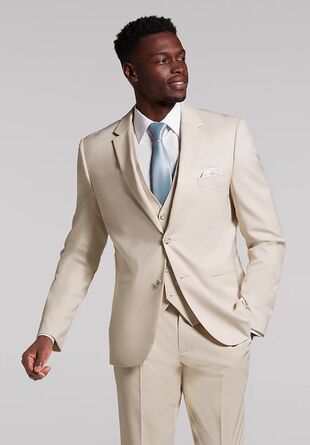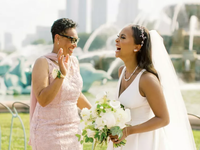Bridesmaid Dress Alterations 101: Everything to Expect From Cost to Timeline
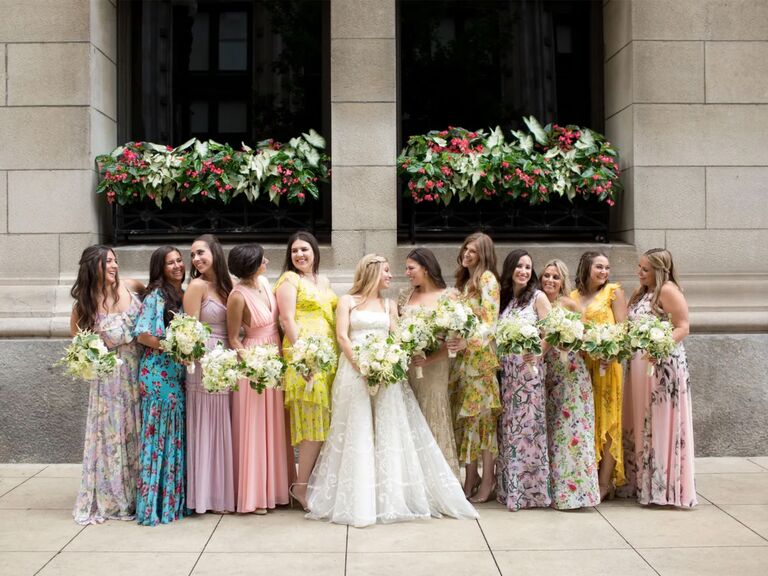
Bridesmaid dress alterations may not be top of mind when you first say "yes" to your bridesmaid dress, but they are much more important than you think. In fact, you may not even want to walk down the aisle until you've had some key dress alterations done. Even on the rare occasion that your dress fits almost perfectly, there are likely still a few small adjustments you'll need to ensure a confidence-boosting fit on the big day. While it may be tempting to forego alterations in order to save some money—trust me—proper tailoring can make your dream dress look even better than you imagined.
While the process of starting your bridesmaid dress alterations can feel overwhelming, I'm here to help. If you have never had a dress tailored before, there are some important considerations to keep in mind when starting the process. Knowing all of the information about the process upfront, like the cost of alterations, what they typically entail and how long they take, will help you plan ahead. Below, read up on everything you need to know about bridesmaid dress alterations. I promise it'll be a seamless experience.
In this article:
- Bridesmaid Dress Alterations Near Me
- Bridesmaid Alterations FAQs
- Types of Bridesmaid Dress Alterations
- What to Wear to a Bridesmaid Dress Fitting
Bridesmaid Dress Alterations Near Me
Even if you feel confident in your sewing skills, I highly recommend taking your dress to a professional, as alterations aren't as simple as they may seem. Delicate or heavily embellished fabrics require extra care and attention, and sometimes even special types of needles or thread. Plus, seamstresses have spent years honing their craft and are experts at handling garments with the utmost care. The Knot Marketplace is a great resource for finding bridal salons and alteration services in your area. Simply select your location, click on "+ More Filters," and choose the "Alterations" category to browse through a variety of small business owners who can help you achieve the perfect fit for your bridesmaid dress.
Bridesmaid Alterations FAQs
Dress alterations can be a bit daunting, especially when you're a bridesmaid. It may even feel awkward to ask some of these questions about how much bridesmaid dress alterations cost, who is responsible for paying for the alterations and what to expect from a dress alteration. To help make it easier, I tapped Grace Lee, CEO and founder of Birdy Grey which sells chic bridesmaid dresses starting at $99, to give you a one-stop shop to answer all of your burning alterations questions.
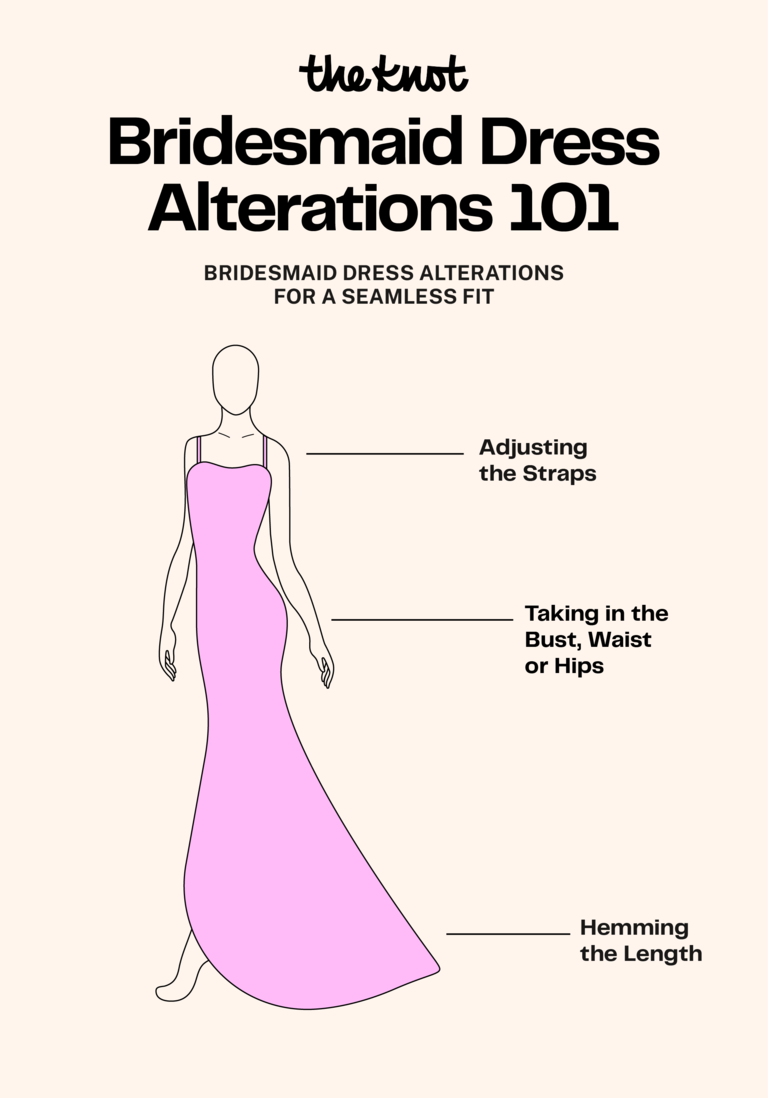
How much do alterations cost for a bridesmaid dress?
On average, bridesmaid dress alterations cost between $75 and $150, depending on the extent of the alterations, the fabric of your dress and where you live. For instance, if you're only having your dress hemmed, you can expect to pay between $45 and $90. When you get into more complex tweaks regarding bust, waist and hip fitting, expect to pay $150 or more. These costs are important to keep in mind when selecting your bridesmaid dress so that you can factor them into your budget. To address the financial burden on bridesmaids, affordable options like Birdy Grey's dresses, starting at $99, have become popular choices for brides looking to accommodate their bridal party's budgets.
It is also important to note that the material of the dress can play a factor in determining the cost. If the dress has intricate beading or appliqué that would need to be removed and/or repositioned, this will increase the price. Double layers in the skirt and horsehair trim also make the process for your seamstress more labor intensive and will increase the alterations cost.
How long do bridesmaid dress alterations take?
The average turnaround time for alterations is about a month. While you may be tempted to get your bridesmaid dress altered as soon as you buy it, we recommend you start your alterations no sooner than six weeks before the wedding so that the fit is as accurate as possible. Depending on how complicated your alterations are, you may need to go back to your seamstress for multiple fittings so Lee advises factoring in a few weeks to see the tailor. "You may visit the tailor thinking it's an easy fix, but that may not always be the case," says Lee. "It's always better to be prepared with some extra padding in the timeline!" Remember, while you don't want to start your alterations too early, that doesn't mean you should wait until the last minute to schedule them. Wedding season is an extremely busy time for tailors, so make sure to schedule your appointments as soon as possible.
Do bridesmaids pay for their own alterations?
Just as bridesmaids typically purchase their own dresses, it's common for bridesmaids to pay for the cost of alterations as well. However, Lee suggests brides can show their support and appreciation by gifting their bridesmaids a gift card to help offset the expense. "I will say, coming from someone who's been in six weddings: As annoying as alterations can be, bridesmaid dress alterations really are worth it—it's important to feel confident and beautiful all night!" Lee says.
How many sizes can you alter a bridesmaid dress?
Most bridesmaid dresses can be taken in up to two sizes without affecting the dress. When it comes to sizing, Lee suggests ordering the closest size but advises bridesmaids to err on the side of caution and size up if unsure, especially for bridesmaid dresses with intricate details like a corseted bodice. "I recommend ordering the closest to your size, but when in doubt, size up," Lee says. "It's a lot easier to alter a dress that's too big than something that's too snug." She emphasizes that feeling comfortable and confident should take priority, even if it means wearing a runner-up dress that fits well rather than squeezing into a top choice that doesn't.
Types of Bridesmaid Dress Alterations
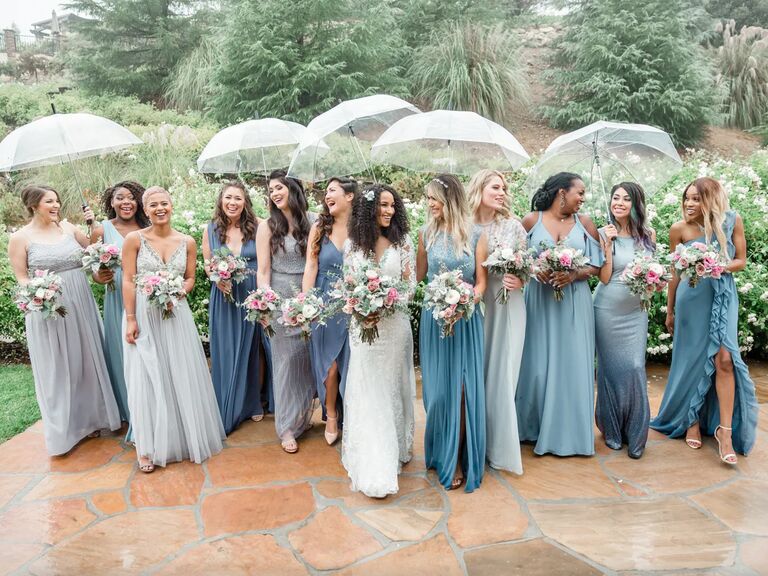
The most common types of bridesmaid dress alterations are hemming the length, adjusting the straps or taking a dress in at the bust, waist or hips. Sometimes you just need one of these done, other times you might be doing all three types. The result, though, is to ensure a flawless fit that makes you feel like your dress was made for you.
Hemming the length: A hem is when the length of a gown is adjusted according to height—this length can be taken up from the bottom or even from the waist, depending on the dress. Bridesmaid dresses are typically cut at a standard length across all sizes with the intention that the wearer can alter it to her perfect length no matter her height. The majority of bridesmaids will at least need a hem. It's essential to keep in mind that your shoes will play a big factor in the length of your gown, so make sure you bring the heels you plan to wear (or ones of the same height), so that your seamstress can work accordingly.
So how long should your bridesmaid dress be? It's up to you. You can choose to let your dress hang about an inch off the floor, barely touching the floor or even let it puddle on the floor a bit. This is all at the discretion of the bridesmaid and what she finds most comfortable. For example, if the wedding is going to be outdoors or if you find yourself tripping over the hem, an inch off the floor will likely be the most comfortable for you. Your seamstress can pin the hem at different lengths so you can try out which one you like best before making a decision.
Taking in the bust, waist or hips: As is the case with any off-the-rack garment, your dress probably won't fit perfectly the first time you try it on. No two bodies are exactly the same, so chances are you are going to need a few alterations here and there. This is where taking in the bust, waist and hips comes in. These alterations are what really give a dress that custom look on the body. It's important to note that most bridesmaid dresses can be taken in up to two sizes smaller, but seam allowances on the dress will dictate how much it can be taken out and made larger. As a general rule, it's better to opt for a larger dress than a smaller one if you're between sizes. Talk with your seamstress if you're concerned about any weight fluctuations and they'll work with you to achieve a perfect fit.
Shortening the straps: No wardrobe malfunction is quite as annoying as straps that keep sliding off of your shoulders. Whether your dress has spaghetti straps or wide straps, shortening the straps of your gown will ensure a snug fit so that you can toast, move around and dance comfortably all night long. For petite folks, this adjustment can also be done to make the waist of the dress hit the correct place on your body.
What to Wear to a Bridesmaid Dress Fitting
Coming prepared for a bridesmaid dress fitting is imperative. Similar to the essentials you need when trying on wedding dresses, you'll want to make sure you've packed everything below for your bridesmaid dress alterations.
Shoes are one of the most important things you'll want to bring with you to ensure your dress length is perfect. Ideally, you'll want to bring along the exact shoes you plan on wearing to the wedding, but if you're not sure, try to bring a pair of shoes as close to the heel height you plan on wearing as possible. If you plan on wearing certain undergarments or shapewear under your dress, wear these to the appointment too.
Consider showing up to your appointment with your hair and makeup done—you don't need to go overboard, but a little glam will give you that extra boost of confidence for the fitting. After all, you'll be looking in a mirror a lot during the appointment and want to feel confident and comfortable.



